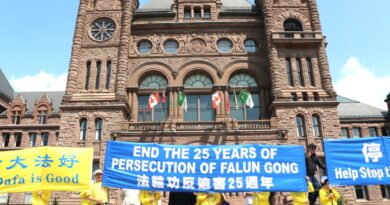Public Service Industries Experience Strongest Job Growth in First Quarter
The Australian Bureau of Statistics also pointed out that there was an increase in the number of people holding multiple jobs during the specified period.
According to the latest labour market report released by the Australian Bureau of Statistics (ABS), the public services industries demonstrated the strongest job growth in the country.
The report highlighted that the top three industries experiencing the most growth were healthcare and assistance (87,300), public administration and safety (23,200), and education and training (17,900).
Conversely, the professional, scientific, and technical services witnessed a decrease in job growth (25,700).
This information comes in light of the ABS reporting a slow increase in the labor market of 0.8 percent.
Bjorn Jarvis, head of labor statistics at ABS, mentioned, “Over the past five quarters, we have observed substantial growth in the labor market within the non-market sector industries—specifically in healthcare and social assistance, education and training, and public administration and safety—compared to market sector industries.”
Mr. Jarvis added, “This indicates that recent job and hour developments have primarily been driven by public service activities, rather than uniform strength across the economy and labor market.”
As the Australian population ages, there is anticipated growth in the demand for healthcare workers and professionals.
Based on the Jobs and Skills Australia’s Care Workforce Labour Market survey, there is a projected shortage of healthcare workers in 2050.
Mr. Jarvis also highlighted that the report indicated the slowest annual increase in hours worked since March 2021.
“The reduced growth in hours worked in the March quarter was due to a higher-than-average number of individuals taking leave or waiting to commence work in January, as well as ongoing weaknesses in industries reliant on discretionary consumer spending,” he explained.
The most recent report follows a statement in April by Minister for Skills and Training Brendan O’Connor praising the country’s low unemployment rate of 3.8 percent under the current government.
The Albanese government reported creating over 780,000 new jobs.
“More jobs have been generated under the Albanese Labor government than any other first-term government in history,” Mr. O’Connor previously stated.
Meanwhile, the ABS reported a further decrease in job vacancies to 4.3 percent.
“Despite a 25 percent decline from the peak in job vacancies observed in September 2022, there were still over 60 percent more vacant roles compared to pre-pandemic levels. There continues to be a substantial demand for workers, contributing to employment growth,” Mr. Jarvis stated.
Increase in Multiple Job-Holders
Moreover, aside from essential industries, the ABS report indicated a rise of 12,000 (1.2 percent) in the number of multiple job-holders in April 2024.
Consequently, the rate of individuals holding multiple jobs remained at 6.7 percent, exceeding the pre-pandemic range of approximately 5.2 percent to 6 percent.
Greg Jericho, Chief Economist of The Australia Institute, correlated the increase in multiple job-holders to over a 5 percent drop in real wages over the past three years, coupled with inflation surpassing wage growth.
Mr. Jericho highlighted that 7.1 percent of jobs in Australia are secondary or tertiary positions for individuals.
“This trend is not indicative of a robust labor force. While it is positive that Australians are securing employment, the fact that nearly 1 million people are seeking additional hours through secondary jobs suggests a burgeoning issue of working poverty,” Mr. Jericho commented.
Minimum Wage Hike
The Fair Work Commission announced a 3.75 percent increase in modern award rates in addition to the scheduled 0.5 percent rise in the Superannuation Guarantee Rate.
Worker unions welcomed the decision, which conversely poses a challenge to businesses that will face increased operating costs.
“This decision enables individuals to keep pace with inflation and receive a minor real wage increase. If employers had their way, Australian workers would have encountered a significant reduction in real wages amid escalating cost-of-living pressures,” stated Sally McManus, secretary of the Australian Council of Trade Unions.
Robert Potter, national secretary of the Australian Services Union, stressed that the decision reflects the financial burdens workers have been grappling with to meet their living expenses.
The unions further commended the Fair Work Commission for acknowledging the undervaluation of workers in feminized jobs and sectors.
“The Fair Work Commission accepted our argument regarding the need for higher wages for workers in feminized industries, although they did not concur that it should be immediate. Unions will continue advocating for these increments through the due process established by the Commission,” Ms. McManus declared.
“This hike will particularly benefit women, who represent three-in-five workers and are predominant in the social, community services, administration, and telemarketing fields,” Mr. Potter highlighted.
Conversely, the Australian Industry (Ai) Group remarked that the decision underestimates the challenges businesses are confronting and may jeopardize job security for workers.
“Significantly, this decision underscores the critical need to address our productivity issues. Without a substantial improvement in productivity, employers will either need to transfer higher wages to consumers or reduce employment levels,” warned Innes Willox, CEO of the Ai Group.
“The 3.75 percent increase will intensify pressure in wage negotiations for similar increments for above-award employees. It is crucial that these wage hikes, decided amidst the current high inflation environment, are not locked in for extended periods through multi-year enterprise agreements.”
Labor Government’s Pledge to Maintain Balance
In the meantime, the Liberal Party holds the Albanese government accountable for evading direct confrontation with inflation, resulting in Australians facing exacerbated financial strains, as per Shadow Minister Angus Taylor.
“By any measure, Labor’s economic management is lacking. The only thing preventing Australians from succumbing in this cost-of-living crisis are their jobs,” he asserted.
In a press conference on June 5, Treasurer Jim Chalmers stated that the Albanese administration is striving to strike a balance between addressing inflation, offering cost-of-living relief, sustaining sustainable economic growth, and fortifying public finances concurrently.
On the contrary, Mr. Taylor insisted that the government must prioritize economic recovery rather than gravitate towards economic ruin.
“We need to steer the economy back on course and restore Australia’s standard of living,” he urged.





